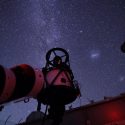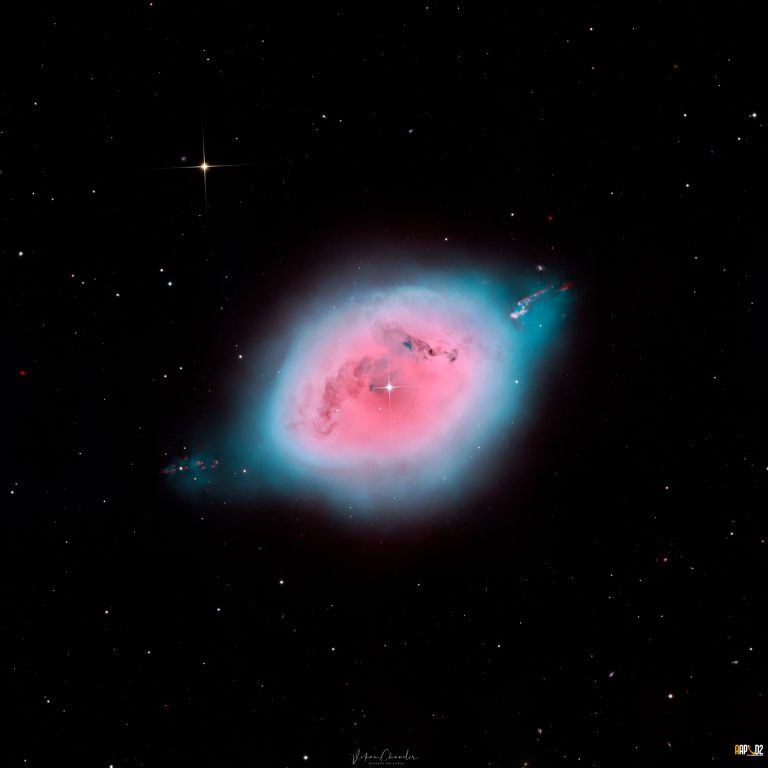Vikas Chander Astrophotography
Robins Egg Nebula
NGC 1360
Telescope : Planewave CDK 24
Camera : Moravian C5A-100
Mount : Planewave L-600
Focal length : 3974mm
Fov : 38 x 29 arcmins
Image Scale : 0.39 arcsec/pixel
Observatory : Deep Sky Chile
Filters: HaORGB
R 24x30s G 24x30s B 24x30s
Ha 201x5m Oiii 202x5m
Integration: 27h28m
RA: 03h33m15s
Dec : -25°52’26”

Lying some 1,500 light-years away, spanning about 3 lights years across in the constellation of Fornax, lies a planetary nebula with a shape and color reminiscent of a blue robin's egg. Recognized as a planetary nebula, NGC 1360 doesn't represent a beginning though, but instead an end in the evolution of an aging star. A planetary nebula is created when a star blows off its outer layers after it has run out of fuel to burn. These outer layers of gas expand into space, forming a nebula which is often the shape of a ring or bubble. About 200 years ago, William Herschel called these spherical clouds planetary nebulae because they were round like the planets, but since then many more planetary nebula have been discovered of varying shapes. At the center of a planetary nebula, the glowing, left-over central part of the star from which it came can usually still be seen. It is expected that our Sun will also form a planetary nebula at the end of its life cycle.
© Vikas Chander All rights reserved Copyrights

